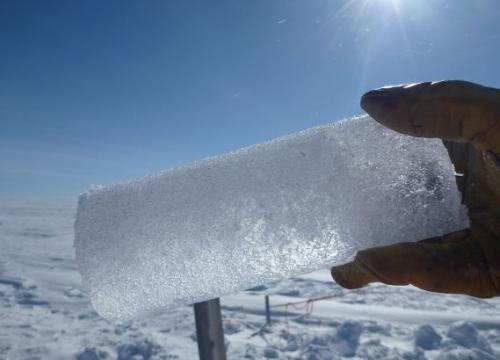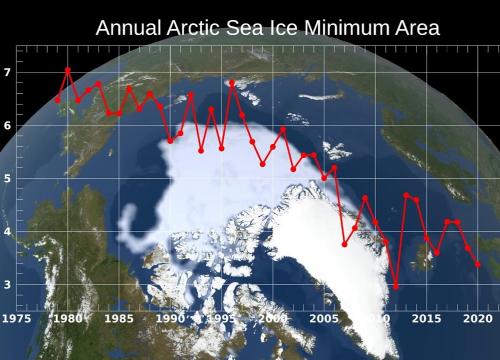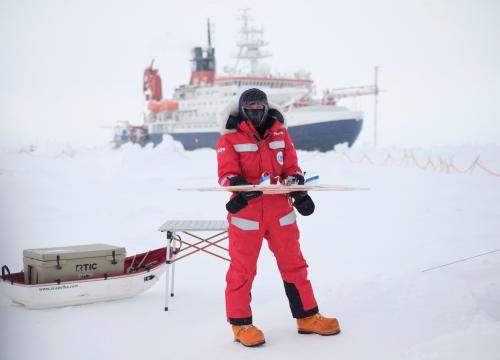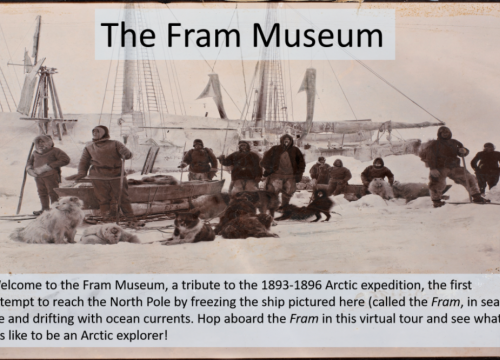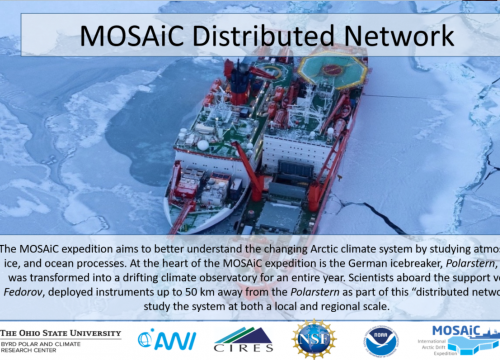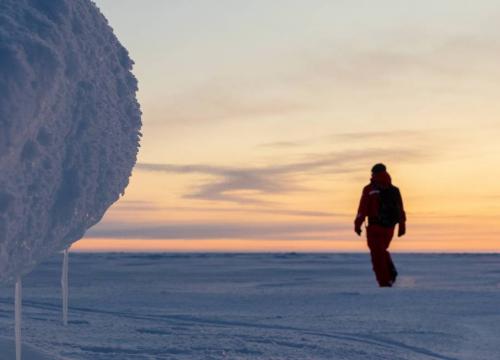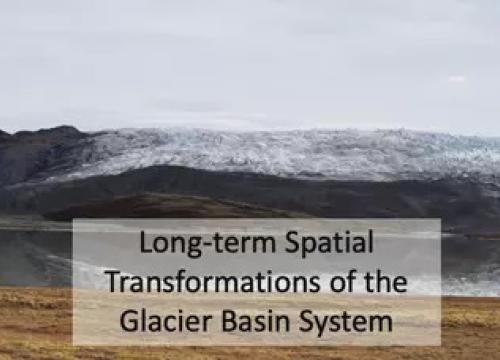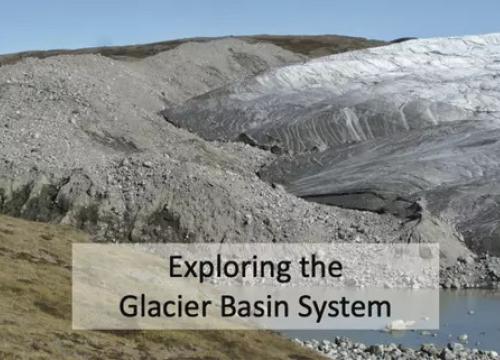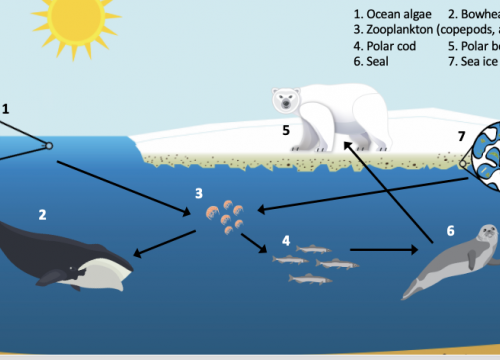Dr. Twila Moon presents on Greenland and Ice Dynamics
Goals Header
About the Presenter
Dr. Twila Moon studies ice dynamics, ice sheet-ocean interaction, ice loss and freshwater flux, ice-ecosystem connections, hydrology of glaciers and ice sheets, glacier-sea ice interaction. She is the lead scientist on the Changing Ice project, which uses data from space, the field, and computer simulations to understand ice and climate change - now and in the future.
Attn: If you're a fully-funded post-doc you can join Twila's team at the Changing Ice project.
Recommended Activities for e-Learning
Pre-K: Explore edible ice structures with frozen fruit in this activity from Science Friday. No two pieces of fruit turn out the same!
K-5: What do a polar bear, a bowhead whale and a jellyfish have in common? They are all part of the Arctic ecosystem! PBS learning has an online interactive to explore the creatures that live in the Arctic and how they all work together. Then make your own blubber gloves using plastic bags and shortening to investigate how animals that live in icy waters can keep themselves warm.
6-8: How do we know what we know about glaciers? This video from the Washington Post follows two scientists as they collect data to understand what is happening to Greenland's glaciers. Then use these activities from SeaGrant Alaska to explore what changing glaciers mean to the landscapes they travel over.
You can also take the Ice and Glaciers Quiz to see how much you know about the Earth's cryosphere and the changes that are happening there.
What has a greater impact on Sea Level Rise - sea ice or land ice? You can create a hands on model and find out. This is easiest to do with modeling clay, a clear container you can mark and ice cubes. But if you don't have modeling clay, an overturned glass with a flat bottom could replicate the land.
9-12: When you are ready to dig a little deeper, this visualization from PBS learning looks at the data that are collected about the Greenland Ice Sheet and what we can learn from them. There is also this video of two ice core data scientists from the University of Maine talking about how they do their work and what we can learn from it.
NASA offers this presentation on 10 Things About Ice in their Sea Level Change from Space Portal which pairs perfectly with Twila's presentation.
Then take a look at this video about how Inuit communities and researchers are collaborating to share knowledge. Why is it important for western scientists to include the perspectives of people who live in the communities they are studying?
All Ages: Want to see what sea level rise impacts might be? CLEANet.org walks you though how this tool can be a good classroom resource.
Why is sea level rise not uniform? This article from NASA helps explain the many factors that affect the sea level rise globally.
Interested in learning more about the UNESCO site, Ilulissat Icefjord, Twila mentions? Visit Greenland has lots of great information.
